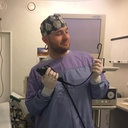[Lymphocele--urological complication after renal transplantation].
Ключавыя словы
Рэферат
Renal transplantation is the best renal replacement treatment. It provides longer survival and a better quality of life. The outcome of renal transplantation is influenced by the occurrence of various complications, including urological. One of the most frequently occurring complications is lymphocele. Most cases of lymphocele develop during a period of several weeks after the procedure of transplantation. However, there are some literature reports concerning lymphocele diagnosis in the later period, even after several years. Most cases of lymphocele are asymptomatic and are diagnosed accidentally. Nevertheless, a large lymphocele may press the kidney, ureter, urinary bladder or neighbouring blood vessels, causing deterioration of renal function, leg oedema and thrombosis of iliac vessels. Among other complications there are infections. The cause of lymphocele is collection of the lymph drained from damaged lymph vessels surrounding iliac blood vessels and/or lymph vessels of the graft. Important factors predisposing to lymphocele are immunosuppressive treatment, including mTOR inhibitors, mycophenolic acid derivatives and high doses of glucosteroids. Factors favouring occurrence of lymphocele comprise obesity, diabetes, elderly age of recipient, long time of warm ischaemia, acute rejection episodes and delayed graft function. The authors describe presently available treatment methods including aspiration and percutaneous drainage, with or without sclerotisation, drainage using the Tenckhoff catheter and laparoscopic or open fenestration. At present, laparoscopic fenestration is considered to be the most efficient and the safest method. However, there are clinical cases where open surgical treatment is necessary.



